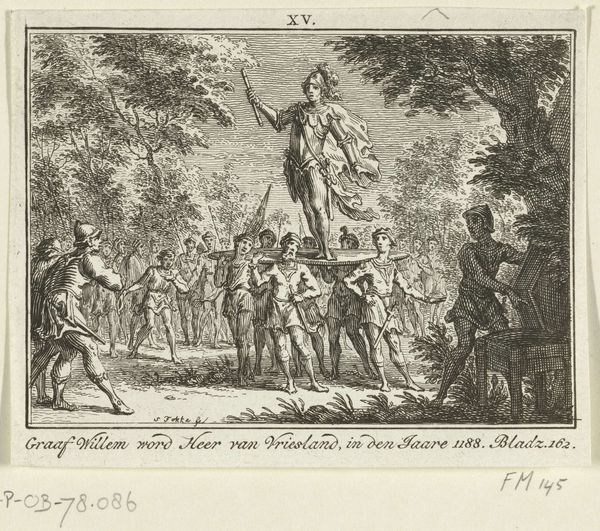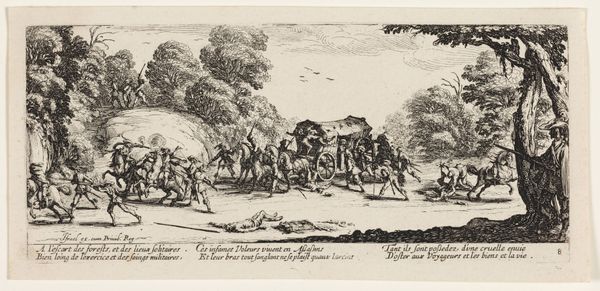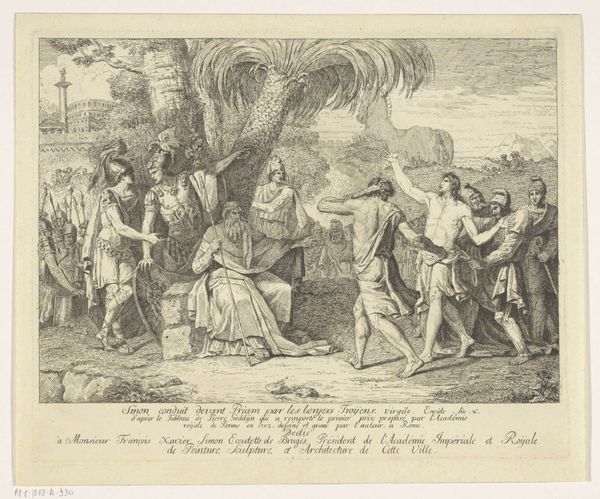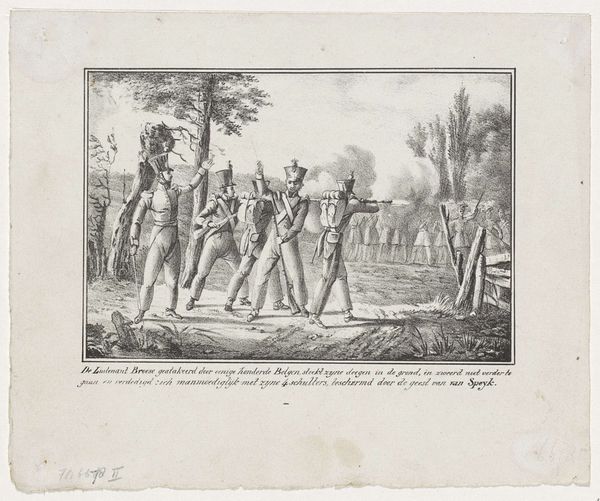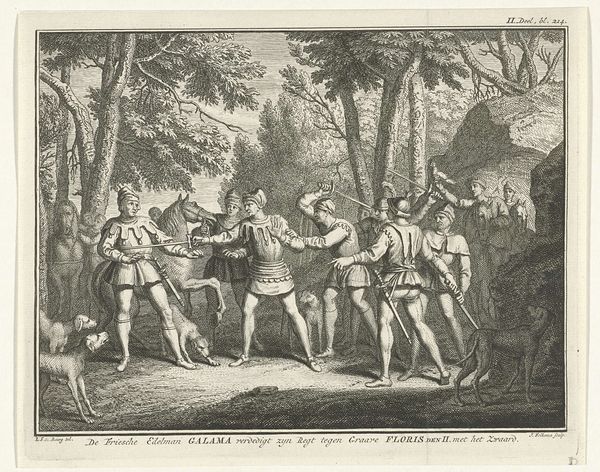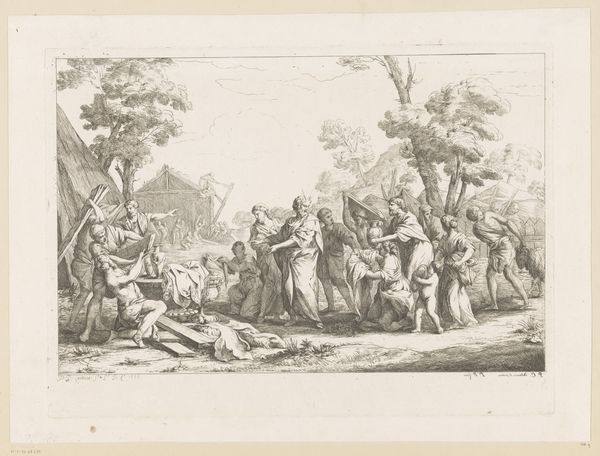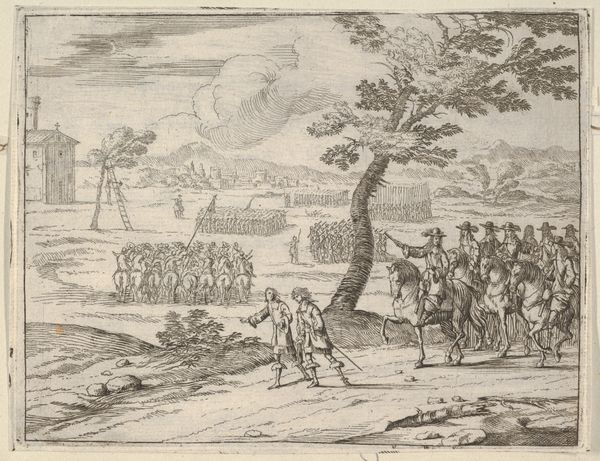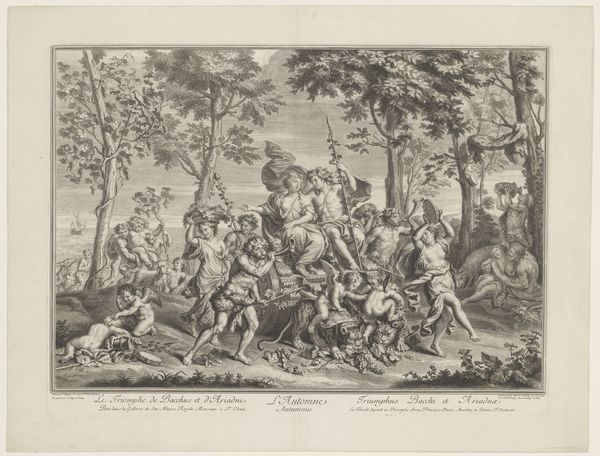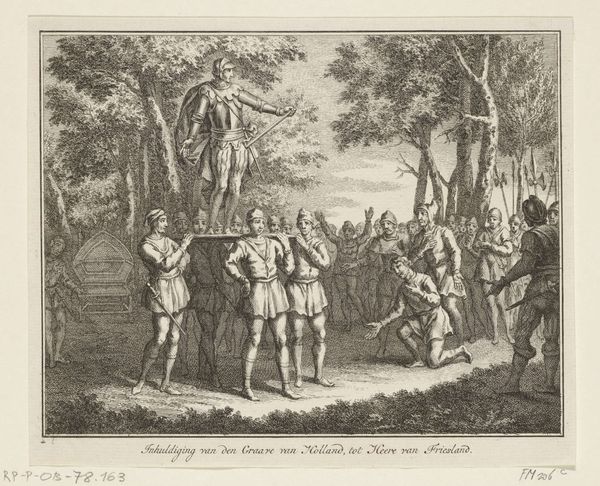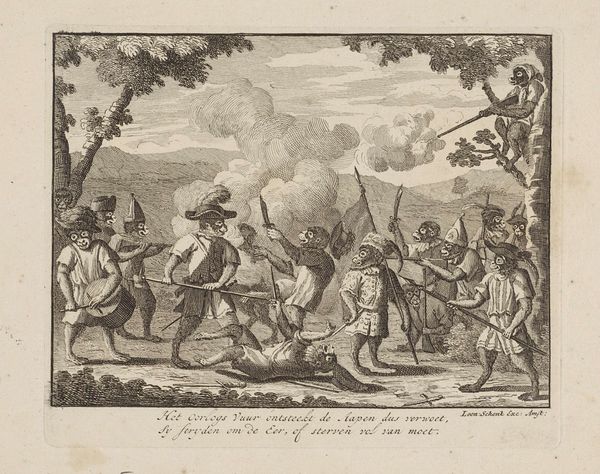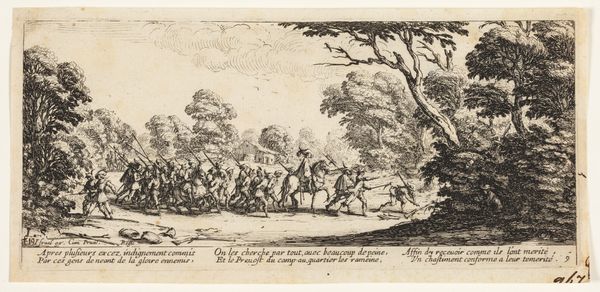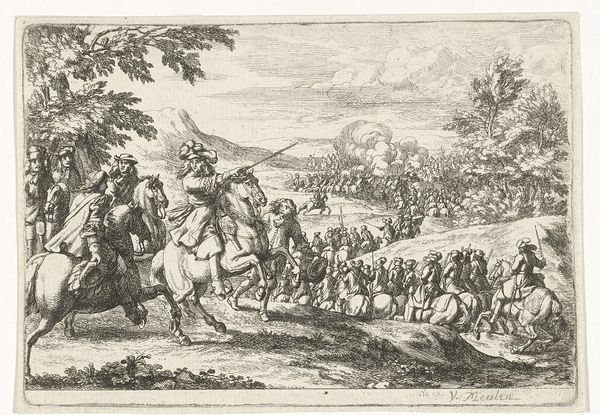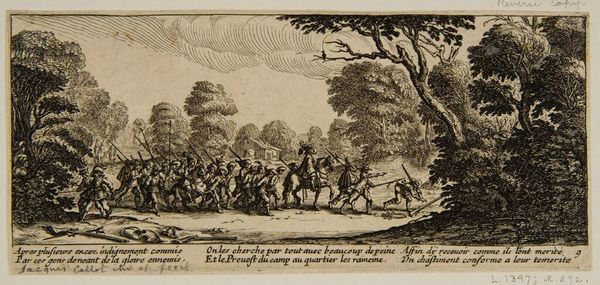
Dimensions: height 80 mm, width 100 mm
Copyright: Rijks Museum: Open Domain
Curator: Here we have Simon Fokke's engraving, "Floris V tijdens het jagen gevangengenomen, 1296," dating from between 1782 and 1784. It depicts the capture of Count Floris V during a hunt. Editor: It feels quite chaotic, almost frenetic, doesn’t it? All those figures in such a tight composition, lots of diagonal lines created by the lances and bodies... it creates a sense of unease. Curator: I agree. Look at the fineness of the lines, characteristic of engraving. Consider the material reality of this print; it's not just an image but a carefully crafted object intended for wider distribution. Prints such as this one allowed historical events and narratives to circulate more freely among different social classes, fostering a shared sense of history—or a carefully curated version thereof. Editor: Absolutely. The formal organization directs our gaze immediately to the cluster of figures around Floris, but it's interesting how Fokke used contrasting line weights to suggest depth. See how those trees and distant buildings are implied rather than delineated? I find the landscape details—the foliage and suggestion of architecture—intriguing; they provide a stage for the dramatic figures, almost like a theatrical backdrop. Curator: Indeed. This piece wasn't just about aesthetic pleasure; it functioned as a visual document reinforcing specific historical narratives and possibly promoting particular socio-political perspectives related to Dutch identity. The labour involved, both artistic and in the subsequent reproduction, reflects the social and cultural importance attributed to historical subjects. Editor: Yet, beyond its propagandistic function—if we choose to read it that way—the print's elegance as a pure, formal object holds enduring interest for me. Look at the texture Fokke managed to achieve. Curator: Studying such works reminds us that art production is inherently linked to materials, labour, and systems of dissemination. By focusing on these factors, we challenge a narrow art-for-art's-sake perspective. Editor: And I find examining visual vocabulary deepens understanding of historical representations... it really expands the potential of a single image.
Comments
No comments
Be the first to comment and join the conversation on the ultimate creative platform.
